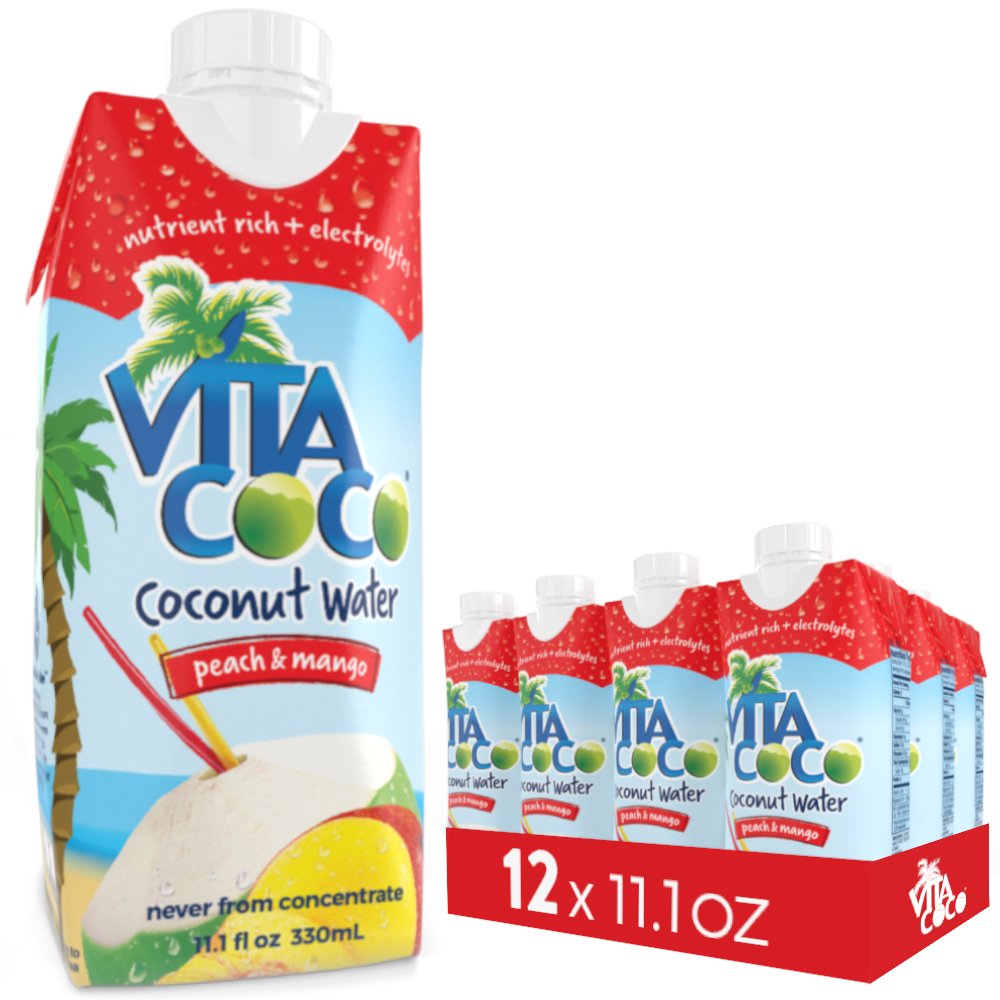
These days, your run-of-the-mill grocery store usually carries several brands of coconut water, packaged in tropically suggestive cartons and boxes promising ultra-hydration. And we’re certainly buying what’s on the shelves—between 2007 and 2014, the American coconut water market grew by almost 3,000 percent! But, when you throw a coconut water back post-workout or after a rough night out, what exactly are you getting? And how is that coconut water produced?
You might have enjoyed a coconut cut fresh from the tree if you’ve ever been on vacation to say, Tulum. Perhaps after a bit of machete work, you learned first-hand that coconut water is delicious and ready-to-drink, straight from the coconut. As Vita Coco explains, “coconut water is the clear, fat-free liquid that’s inside a young coconut.”

Vita Coco
Since coconut water is pretty much ready-to-go in the coconut, what else happens before it reaches the grocery store shelves? Well, after harvesting, washing, and cracking open the coconuts, pasteurization is used to preserve the coconut water and extend shelf life. Companies like Vita Coco and ZICO use thermal pasteurization, while pricier brands like Harmless Harvest touts a “ proprietary multi-step micro-filtration process.” Both techniques make for a longer-lasting coconut water.
Vita Coco Coconut Water, Peach Mango (Pack of 12), $20.42 on Amazon
Try one of the many fun flavored coconut waters available!
So what do you get for paying more? One big difference shows up in the color of the coconut water—some bottles of Harmless Harvest are sometimes pink. This particular style of coconut water contains antioxidants that may turn the liquid pink when encountering light and the producer chooses not to hide this natural reaction by adding any ascorbic acid or vitamin C. ZICO also avoids additives (but does use opaque packaging, so any color changes would not be obvious), while Vita Coco includes less than one percent additional fruit, sugar, and ascorbic acid.

Harmless Harvest
If sourcing is important to you, it is worth knowing that Harmless Harvest procures its coconuts from Thailand and gives back to Thai farming communities with an “ecosystem-based business.” Vita Coco also practices social responsibility through the Vita Coco Project with contributions in Sri Lanka and the Philippines, while also sourcing from Indonesia, Thailand, and Malaysia. ZICO does not list any similar programs, but notes that they work with farms in Thailand, Indonesia, and the Philippines.
Unless you have easy access to fresh coconuts (and are handy with a machete), your best bet for enjoying a refreshing coconut water will be buying one of the packaged brands. Sip (maybe out of a coconut-shaped cup?) and channel those tropical breezes.
Related Video: Dos and Don’ts of Breakfast Smoothies
All featured products are curated independently by our editors. When you buy something through our retail links, we may receive a commission. For more great hand-picked products, check out the Chowhound Shop.
from Food News – Chowhound https://ift.tt/2PK5WLr
via IFTTT


No comments:
Post a Comment